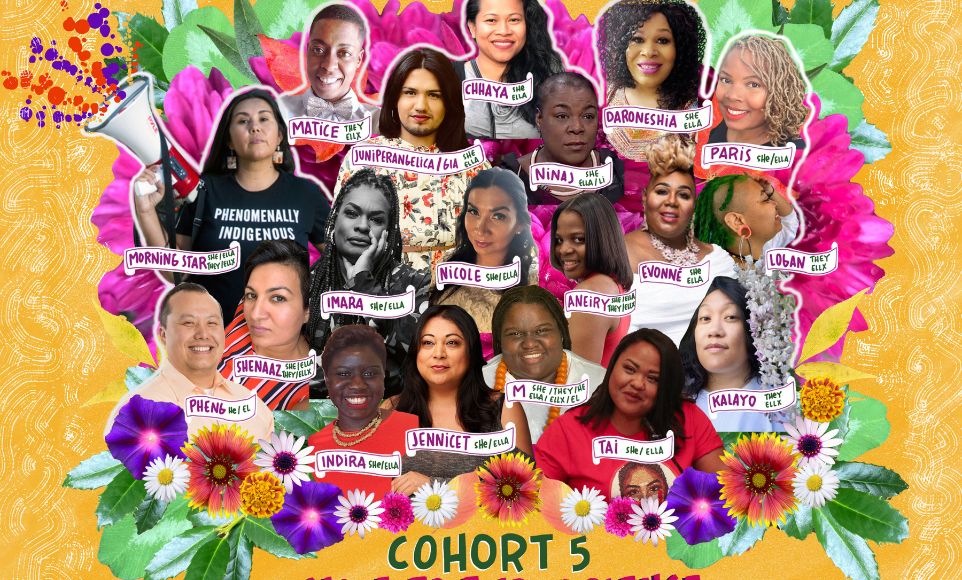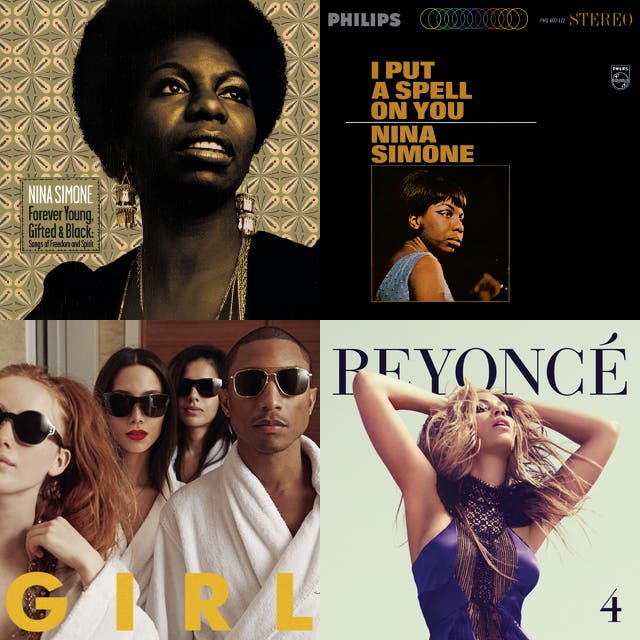What I’ve Learned about Showing Up for My Black Co-Director
Monica Dennis and I are coming upon our two-year anniversary as Co-Directors of Move to End Violence. In addition to our shared commitment to the work of MEV and our ability to envision how we could work well together, one of most compelling reasons behind our partnership was the opportunity to build a cross-race Black-Asian co-directorship.
Situated within decades of tensions between Black and Asian communities in this country and abroad, we saw the possibility of having our experience contribute to a larger body of cross-race solidarity work. In these times of active movements for Black lives, it’s paramount that Asians show up strong and visible in the push for racial justice.
There are many great resources out there with clear directives for how Asians can be in solidarity (here are some: #ASIANS4BLACKLIVES, 20+ Allyship Actions for Asians to Show Up for the Black Community, and Solidarity Not Allyship). As part of our contribution, here are some of the lessons that have been pivotal to me, and that I am still learning, in order to show up for my Black Co-Director.
1. Resist getting pulled into a Black-White paradigm.
This country is built on false binaries and the story we learn about race is often framed as Black versus White. One of the many consequences of this binary is that it forces people to choose, which especially harms people who are mixed race, those who don’t identify as either, and people with complex identities such as trans-racial adoptees. As an Asian American, choosing Black erases differential impact and hides the persistence of anti-Blackness in Asian communities. Choosing White allows Asian people to be co-opted and manipulated in support of white supremacy.
When I have not felt grounded as a non-Black woman of color, it’s had negative impacts on our co-directorship. At times, I somewhat unconsciously would play the role of a “good white person” where I would keep quiet in group conversations to not take up space or where I would take accountability and apologize for the harms of white supremacy, which would put Monica in an awkward position and would leave her feeling unpartnered.
I know that Monica does not need me to play the role of a white person to serve as her foil and she is not looking to me to play the role of a Black partner either. But that doesn’t mean I don’t sometimes get sucked into the false binary, especially during times I feel anxious, confused, or overwhelmed.
The best solution I’ve found is to get clearer about my identity as an Asian American woman and to be proud of who I am. As someone born in the United States who did not grow up in a Chinese community and who learned to equate whiteness with desirability and belonging, this grounding in my identity outside of the binary has taken work and intention. The support and guidance of many other non-Black women of color mentors, coaches, and colleagues has been critical.
I have gotten clearer that one of my responsibilities in multi-racial women of color spaces is to explore what Asian American feminisms can look like. This includes naming and interrupting the ways I benefit from white supremacy but also naming and lifting up the ways Asian communities have suffered from white supremacy and its relationship to imperialism and colonialism. It includes understanding the difference between being Pro-Black and trying to be Black.
2. Take into account the extra work Black folks are always doing.
As co-directors, we believe in equal pay, equal workload, and equal responsibility between the two of us. But part of this calculation must encompass the relentless micro-aggressions and macro-aggressions that Monica is having to constantly navigate as a Black woman in this country and the vast amounts of emotional labor being asked of her. This includes things she experiences at work, such as the questioning and undermining of her leadership and authority, having to monitor how she is showing up, serving as an informal coach and mentor for other Black folks on our team and in our program, and pointing out anti-Blackness that I may miss. This also includes things she is experiencing outside of work, such as the grief and trauma of Black folks being harmed by police, hospitals, schools, and many other institutions I may take for granted, and being a source of care, stability, and advocacy for her family and community.
As her co-director, part of my responsibility is to help make the full breadth of her work visible and valued, to help create an environment where her sustainability and capacity are centered, and to skill up in areas related to racial equity so she is not holding these things alone.
3. Pay attention to anti-Blackness in yourself.
The baseline for me to be in this co-directorship is to acknowledge that I, as we all are, am anti-Black and I can behave in anti-Black ways, no matter how good of a person I think I am. This means that when I or someone else notices that I have done something anti-Black, we do not get stuck in unproductive and hurtful conversations about whether it was my intention or whether the other person is imagining things. We can instead move forward on how I can account for it and do better next time.
One example is when we were navigating complicated tech requirements for a multi-country multi-lingual video call. I felt like it was my responsibility to manage it and we were running into snags and I was getting flustered. Monica said she had a suggestion to offer and I didn’t listen to her. When she pointed this out later, there are many responses I could imagine having – getting defensive, deflecting, quickly apologizing and moving on, going into a shame spiral – but I had to sit with it because she was right: I had made assumptions about her technical expertise and language access experience and that was anti-Black. Realizing this and acknowledging it helped us repair more quickly and has helped me from repeating the same mistake.
4. Learn about the diversity in Black identity.
In the same way that histories, experiences, and perspectives within and between Asian American communities vary widely, we must understand that Black identity is not a monolith. There is a level of nuance about the Asian diaspora connected to country of origin, immigration history and status, imperialism, war, language, class, and more that I hold with more care than I do the African diaspora – and that has to change. Collapsing Black Americans into a single identity and not learning about their histories is anti-Black. It’s my responsibility to pay attention to how chattel slavery, the prison industrial complex, resistance movements, religion, colonization, immigration, colorism, and more shape the diversity of Black experience and perspectives in this country, and it’s my responsibility to help make space for that diversity.
5. Feedback practices are essential – but must be done with care.
Black folks are constantly policed, hyper-criticized, and overly-accused for things they have not done, for things that are somehow acceptable for other people to do, and for things that folks are forced to do to survive under systemic oppression – and these accusations have had deadly consequences for Black people. In this context, offering critical feedback to Black folks on our team as a non-Black person has to be done with clarity and care.
In my first director position 15 years ago, I unconsciously went all tiger mom in my feedback practices and I would have people crying in my office during annual reviews. In my current role, out of fear of doing something racist, I’m more likely to not say anything at all. But on any team, especially in a co-directorship, offering and receiving feedback is critical for building trust and supporting growth. What I have found to be helpful is not to assert that someone was doing a particular thing or to assume their motivation behind it, but to be honest about my feelings. Some phrases that help me ground my feedback are “I have a story that….”, “I am feeling….”, and “I’m worried that….”. And when I offer feedback, I have to be prepared to receive feedback in return.
6. Comparison is the thief of joy.
A friend shared this quote with me several years ago and I keep coming back to it whenever I feel like Monica is a better co-director than I am, or that there’s a right way to be a good partner and I’m not living up to it, or when I get overwhelmed by feelings of inadequacy and imposter syndrome. When I brought up these feelings with my coach, she said it stems from the white supremacy habit of scarcity – the idea that there’s only one way to be a leader or that there’s only one correct approach. Learning this made me realize that I’m caught in a perfect storm and that I need to be extra mindful to not get sucked in.
On one side, I’m a fan of lifting up the beauty, power, and brilliance of Black women in a world that is constantly trying to tear them down, and Monica is indeed all of these things. On the other side, I grew up in an Asian immigrant family steeped in scarcity, where we were never praised or affirmed and where we were constantly being compared to each other. So I have one side of me that is trying to lift up Monica as part of my racial justice duty while the other side of me is pushing myself down due to decades of conditioning. Which doesn’t work when you are partners in a co-directorship.
I would love to say that at this stage of my life I truly believe that I am powerful and worthy – I’m not there yet. But what I can say is 1) Monica does not need me to be pushed down in order for her to be lifted up, and 2) We chose to be in this co-directorship together and minimizing my abilities and perspectives does our partnership a disservice. I truly believe these two things and that helps me stand stronger in my leadership.
I am still on this learning journey and am having to grapple with new learnings constantly. Many people have supported me: amazing Black women leaders of MEV, including Maura Bairley and Trina Greene Brown; fierce Asian colleagues who have allowed me to learn from their Black-Asian partnerships, including Kabzuag Vaj, Mimi Ho, bex ahuja, and Susan Misra; coaches who have offered deep wisdom and guidance, including Pia Infante, Linda Gonzalez, and Diana Marie Lee. Above all, I have the utmost gratitude to my co-director Monica Dennis and her clarity and compassion – thank you for being on this journey with me.






.svg)
.svg)





